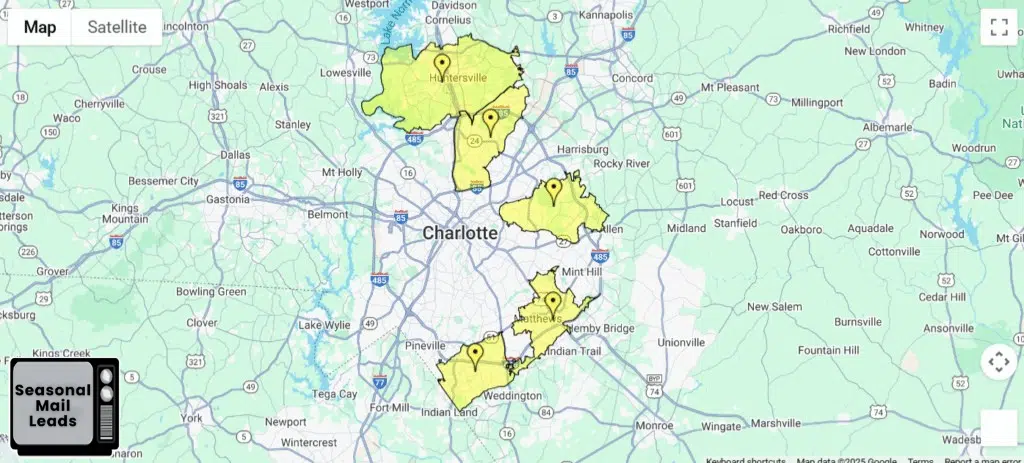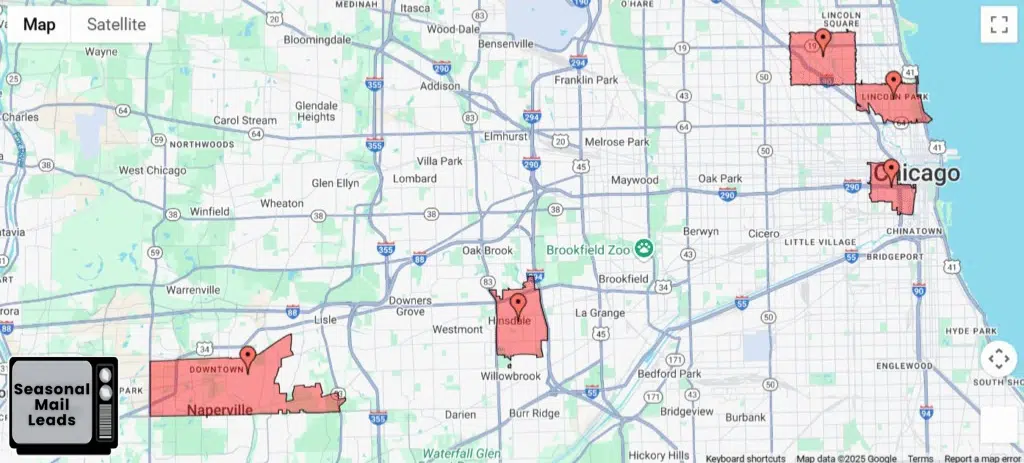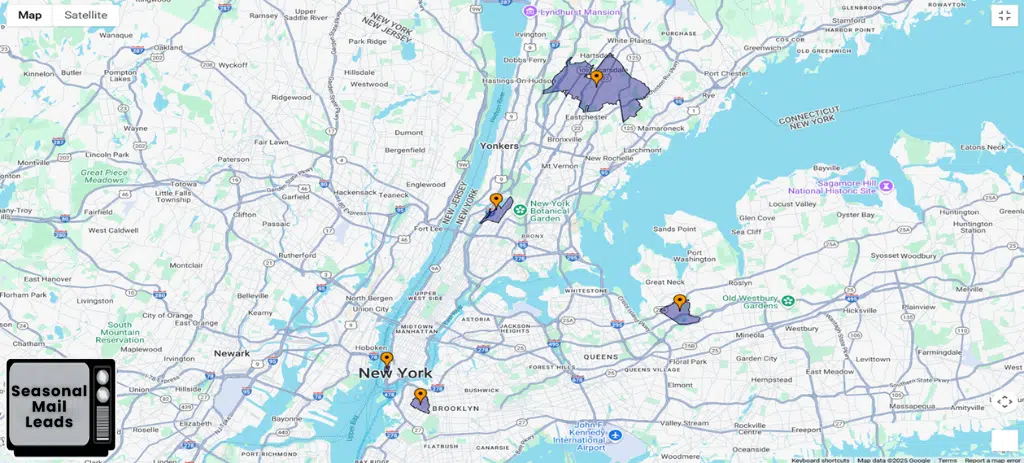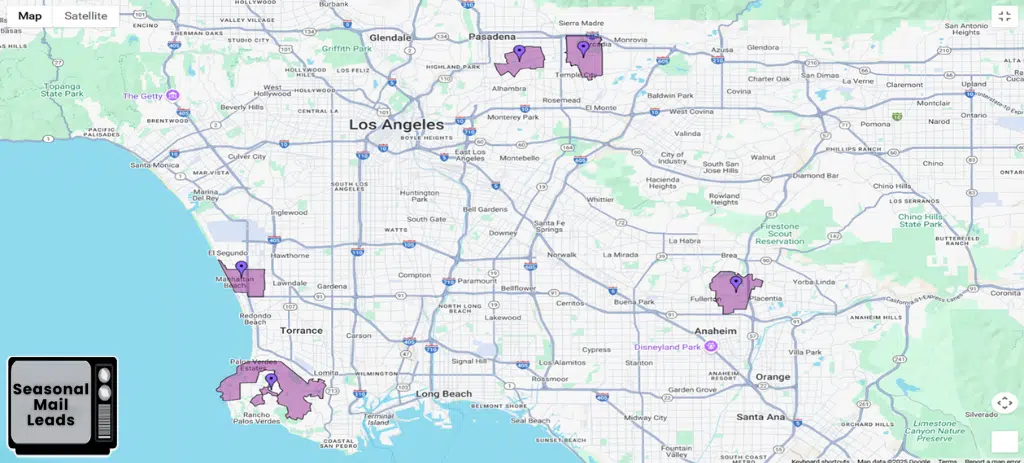
HOA Law Direct Mail: Effective Targeted Lead Solutions for Your Legal Practice
1. Introduction: Targeted Direct Mail for HOA Law Leads
In today’s competitive legal market, acquiring relevant clients efficiently is crucial. Targeted direct mail offers a uniquely effective solution for generating leads for HOA law attorneys from new homeowners. By precisely reaching individuals who are either currently facing or are highly susceptible to association disputes and CC&R challenges, direct mail delivers the most relevant clients directly to your firm. This article will delve into the common HOA legal issues that new homeowners encounter and demonstrate how to design powerful direct mail campaigns that convert these prospects into valuable, long-term clients.
2. Key HOA Legal Issues for New Homeowners
Moving into an HOA community introduces a new layer of legal and financial responsibility. While the concept of shared governance is appealing, the reality often involves complex rules and potential for conflict. New homeowners, in particular, are at a crucial juncture where legal guidance can prevent minor disagreements from escalating into costly disputes.
2.1. Understanding & Interpreting CC&Rs (Covenants, Conditions, and Restrictions)
The foundation of any HOA community lies in its Covenants, Conditions, and Restrictions (CC&Rs), along with bylaws and rules. These documents dictate virtually every aspect of living within the community, from architectural standards to pet policies, parking, and common area usage.
- Complexity and Volume: CC&Rs are often lengthy, written in dense legal language, and can be difficult for the average homeowner to decipher. They typically cover a vast array of topics, making it challenging for new homeowners to understand their full rights and obligations.
- Lack of Prior Experience: Many new homeowners are moving into an HOA community for the first time and have no prior experience interpreting such documents. They may inadvertently violate a rule or misinterpret a right simply due to a lack of understanding.
- Legal Implications: These documents are legally binding contracts. Misinterpreting a clause can lead to fines, liens, or even legal action from the HOA. Attorneys can provide an invaluable service by offering CC&R review and interpretation, ensuring homeowners understand their rights and responsibilities from day one.
2.2. Disputes with the HOA Board (Assessments, Fines, Rule Enforcement)
Conflicts between homeowners and their HOA Board are a common occurrence, and for new homeowners, these disputes can arise quickly, causing significant stress and financial strain.
- Assessments: Disputes over HOA assessments can involve unexpected special assessments, disproportionate allocation of costs, or questions regarding how funds are being managed. New homeowners may be particularly sensitive to these costs if they were not fully disclosed or understood during the purchase process.
- Fines: Homeowners can be levied fines for perceived violations of CC&Rs, such as unapproved exterior modifications, landscaping issues, noise complaints, or parking violations. Disputes often arise when fines are seen as arbitrary, excessive, or inconsistently applied.
- Rule Enforcement: Conflicts frequently stem from inconsistent or unfair rule enforcement by the HOA Board. Homeowners may feel singled out or that the board is acting outside its authority. An attorney can assess the validity of the HOA’s actions and advise on the appropriate legal recourse.
- Board Decisions: Homeowners may disagree with specific decisions made by the HOA Board, such as changes to community amenities, vendor contracts, or proposed rule amendments. Legal guidance can help homeowners understand their rights to challenge or influence these decisions.
2.3. Common Area Disputes
Shared spaces and amenities are a hallmark of HOA communities, but they can also be a source of frequent disagreements. New homeowners may quickly find themselves embroiled in disputes related to common areas.
- Maintenance Issues: Disputes can arise over the proper maintenance of common areas like pools, clubhouses, landscaping, or playgrounds. Homeowners may feel the HOA is neglecting its duties or mismanaging funds allocated for these areas.
- Usage Rules: Conflicts often occur regarding the usage rules for amenities, such as booking systems, guest policies, or noise restrictions.
- Parking: Parking is a perennial source of HOA disputes, particularly in communities with limited spaces or strict rules regarding guest parking, commercial vehicles, or oversized vehicles.
- Boundary Disputes: While less common, issues can arise regarding the exact boundaries of individual property versus common areas, especially concerning fences, landscaping, or encroachments.
2.4. Architectural Review Board Challenges
Many HOA communities have an Architectural Review Board (ARB) responsible for approving any exterior modifications to homes to maintain community aesthetics. For new homeowners eager to personalize their space, navigating the ARB process can be frustrating.
- Strict Guidelines: ARB guidelines can be incredibly detailed and restrictive, dictating everything from paint colors and roof materials to landscaping, fences, and even minor décor.
- Application Process: The application process is often complex, requiring detailed plans, material samples, and strict adherence to submission deadlines.
- Denials and Appeals: Homeowners frequently face denials, sometimes without clear reasons, leading to challenges. An attorney can help homeowners understand their rights, prepare robust applications, appeal unfair denials, and even litigate if the ARB acts arbitrarily or outside its authority.
2.5. HOA Collections & Foreclosures (if applicable to homeowner side)
The most severe HOA legal issue for a homeowner is often related to collections for unpaid dues or fines, which can escalate to liens and even foreclosure.
- Aggressive Collection Tactics: Some HOAs employ aggressive tactics to collect past-due assessments, including sending demand letters, imposing late fees, or accelerating future dues.
- HOA Liens: If dues remain unpaid, the HOA can place a lien on the homeowner’s property, which can impact their credit and ability to sell or refinance.
- HOA Foreclosure: In many states, HOAs have the power to foreclose on a home due to unpaid dues, even if the homeowner is current on their mortgage. This is a devastating prospect for a new homeownerand highlights an urgent need for legal defense.
- Assessment Validity: Attorneys can challenge the validity or amount of the assessments claimed by the HOA, or argue that the HOA failed to follow proper procedures in imposing the dues or initiating collections.
3. Targeting HOA-Affected New Homeowners via Direct Mail: Smart Data Use
The effectiveness of direct mail for HOA law lies in its ability to be hyper-targeted. Instead of broad appeals, Seasonal Mail Leads leverages smart data use to identify and reach new homeowners specifically within HOA communities, ensuring your outreach is highly relevant and maximizes your ROI.
3.1. Identifying Properties within HOA Communities
The first and most critical step is to accurately identify homes that are subject to HOA rules. This goes beyond simply geographic targeting:
- Deed and Public Record Analysis: We utilize sophisticated databases that include information extracted from property deeds, covenants, and plat maps, explicitly identifying properties that are part of a recorded Homeowners’ Association.
- Property Type Indicators: Certain property types (e.g., condominiums, townhomes, planned unit developments) are almost universally governed by an HOA.
- Geographical Boundaries: We can often pinpoint specific subdivisions, communities, or even individual buildings known to have HOAs.
This precise data ensures your direct mail is sent only to homeowners who genuinely have an HOA, eliminating wasted postage and dramatically increasing the relevance of your message.
3.2. Messaging Addressing Common Frustrations & Rights for HOA Law Clients
Once you’ve identified the right audience, your direct mail messaging must resonate directly with their likely experiences and concerns within an HOA.
- Acknowledge Pain Points: Start by validating their potential frustrations. “Just moved in? Navigating HOA rules can be a maze.” or “Facing a surprise HOA fine?” This shows empathy and understanding.
- Highlight Common Issues: Briefly mention common HOA disputes or challenges (assessments, architectural approvals, rule enforcement) to prompt recognition.
- Inform Them of Their Rights: Empower homeowners by briefly touching upon their rights within the HOA structure. “Did you know you have rights as an HOA member?”, “Understand your right to dispute unfair fines.” This positions your firm as an advocate.
- Focus on Solutions: Shift from problem to solution. “Let us help you decipher your CC&Rs,” “Expert guidance for HOA disputes,” “Protect your rights against an overreaching HOA Board.”
The goal is to make new homeowners realize that their specific frustrations or questions are common, solvable, and that your firm is the expert to help.
3.3. Offers for CC&R Review or Dispute Consultation
To drive action, your direct mail must present clear, low-barrier, benefit-driven offers. For HOA law, these might include:
- Free CC&R Review: Offer a complimentary initial review of a homeowner’s CC&Rs to identify potential issues or clarify ambiguities. This is a high-value, low-commitment offer that establishes trust.
- Initial Dispute Consultation: Promote a “No-Cost HOA Dispute Consultation” to discuss a specific problem they’re facing with their HOA Board or an Architectural Review Board decision.
- HOA Homeowner’s Rights Checklist: Offer a free downloadable guide or checklist outlining basic homeowner rights within an HOA.
- Webinar Invitation: Host a free online seminar on “Understanding Your HOA: A Guide for New Homeowners” or “Navigating Common HOA Disputes.”
These offers make it easy and appealing for homeowners to take the first step, positioning your firm as an accessible and expert resource in the complex world of HOA law.
4. Designing Trustworthy Direct Mail for HOA Law: Building Credibility
In HOA law, where emotions can run high and homeowners seek clear, authoritative guidance, the design and tone of your direct mail are paramount in building credibility and trust.
4.1. Professional Tone & Authority
Your direct mail piece must convey expertise, confidence, and a calm, problem-solving approach.
- Legal Professionalism: Use a clean, uncluttered layout, professional fonts, and high-quality paper stock. Avoid overly flashy or aggressive marketing tactics.
- Authoritative Language: While avoiding jargon, use language that establishes your firm as knowledgeable and experienced in HOA law. “Expert legal counsel,” “Specializing in homeowner rights,” “Proven track record in dispute resolution.”
- Empathetic Yet Firm: Acknowledge the frustration homeowners feel, but project an image of strength and capability in resolving conflicts. “We understand the challenges… let us fight for your rights.”
This tone assures homeowners that you are not just a legal service, but a reliable advocate.
4.2. Clear Explanation of Homeowner Rights
An empowering element of effective HOA law direct mail is providing homeowners with a glimpse into their rights. This can be done subtly within the message.
- Educational Snippets: Briefly mention a specific right they may not be aware of, like the right to access certain HOA records or the right to due process before a fine is levied.
- Question-Based Approach: Pose questions that highlight rights: “Are you aware of your voting rights in the HOA?”, “Do you know the proper channels to dispute a fine?”.
- Focus on Empowerment: Frame your services as empowering the homeowner to understand and assert their legal standing, rather than just solving a problem for them.
By informing them, you build trust and demonstrate your firm’s commitment to protecting homeowners.
4.3. Visuals that Convey Order & Resolution in HOA Disputes
The visual elements of your direct mail should align with the message of bringing order to chaos and finding effective resolutions.
- Imagery of Harmony and Order: Use visuals that depict well-maintained communities, harmonious neighborhood scenes (without being overly idyllic or fake), or a sense of legal clarity (e.g., professional, well-lit office spaces, confident legal professionals).
- Avoid Conflict Visuals: Steer clear of images that suggest angry confrontations or messy legal battles, as this can be off-putting. Focus on the positive outcome of resolution.
- Branding and Consistency: Ensure your firm’s logo, colors, and overall visual identity are consistently applied. This builds brand recognition and reinforces professionalism.
- Clear Call to Action Design: Make the Call to Action visually prominent and easy to locate, using contrasting colors or a dedicated box.
Thoughtful design elements can subconsciously assure homeowners that your firm is organized, competent, and capable of bringing order and resolution to their HOA challenges.
5. Measuring ROI for HOA Law Direct Mail Campaigns
Measuring the return on investment (ROI) for HOA law direct mail campaigns is crucial for optimizing your marketing spend and demonstrating tangible results. Seasonal Mail Leads provides the tools and insights necessary for accurate tracking.
5.1. Tracking Inquiries for HOA Disputes
The initial step in measuring ROI is diligently tracking every inquiry that results from your direct mail campaign. This includes:
- Dedicated Phone Lines: Utilize unique, trackable phone numbers for each mailer or campaign segment. This provides precise data on call volume generated by the mail.
- Custom Landing Pages/URLs: Direct recipients to specific landing pages on your website using unique URLs or campaign parameters. This tracks web traffic and form submissions directly attributable to the mail.
- QR Codes: Incorporate trackable QR codes that link to specific offers or contact forms, providing an easy and measurable way for smartphone users to engage.
- Inquiry Categorization: Train your intake team to ask “How did you hear about us?” and to categorize inquiries specifically as HOA disputes, CC&R reviews, or other HOA-related legal needs.
This comprehensive tracking provides real-time insights into which messages and offers are resonating most with new homeowners facing HOA challenges.
5.2. Client Acquisition for Advisory or Litigation Services
Beyond initial inquiries, the true ROI is measured by the conversion of these leads into retained clients. It’s important to distinguish between different types of HOA legal services:
- Advisory Services: This might include CC&R review, basic advice on HOA rules, or initial assessment of a dispute. Measure the conversion rate from initial inquiry to these advisory retainers.
- Litigation/Dispute Resolution Services: For more complex HOA disputes, fine challenges, or foreclosure defense, these are higher-value cases. Track the conversion rate from advisory services or direct inquiries to full litigation retainers.
- Average Case Value (ACV): Understand the average revenue generated from both advisory and litigation HOA clients acquired through direct mail.
By meticulously tracking these conversion rates and ACV, your firm can pinpoint the most profitable HOA law sub-niches and refine its intake and service offerings to maximize the value of each lead.
5.3. Case Study/Example
Consider “Community Rights Legal,” a firm specializing in HOA law. They partnered with Seasonal Mail Leads to target new homeowners (purchased within the last 6 months) within HOA communities in specific counties known for high HOA activity.
Seasonal Mail Leads designed a direct mail piece with the headline: “Just Moved In? Understand Your HOA Rights & Avoid Costly Disputes.” The mailer offered a “FREE 30-Minute HOA Rights Consultation” via a dedicated phone number and a unique landing page URL for online booking.
Over a four-month campaign, Community Rights Legal received 180 qualified inquiries specific to HOA issues, representing a 2.8% response rate. Of these inquiries, 95 scheduled consultations, and 30 converted into retained clients for either CC&R review, dispute resolution, or fine appeals. With an average retainer value of $3,500 for these cases, the campaign generated over $100,000 in new revenue. This clear ROI demonstrates the powerful efficacy of targeted direct mail for HOA law client acquisition.
6. Call to Action
Ready to connect with new homeowners who are actively navigating or anticipating HOA challenges?
- Request Your FREE Sample Postcard tailored for HOA Law Leads.
- Discuss Your Targeted HOA Lead Generation Strategy with our experts.
Let Seasonal Mail Leads help your firm become the go-to resource for HOA legal needs in your market, building a sustainable pipeline of valuable clients.
7. Conclusion
The complexities of HOA living present a unique and consistent need for specialized legal guidance among new homeowners. While this demographic actively seeks to understand their rights and resolve association disputes, reaching them effectively requires a strategic and highly targeted approach.
Direct mail offers a highly effective and targeted way to capture the attention of new homeowners who are either already embroiled in or are seeking to proactively understand the intricacies of HOA rules and potential CC&R challenges.
Seasonal Mail Leads provides the expertise in niche targeting and innovative solutions to ensure your firm efficiently acquires clients for their HOA legal needs. By precisely identifying homes within HOA communities, crafting messages that resonate with common frustrations, and offering clear pathways to engagement, your firm can establish itself as the leading authority in HOA law.
It’s time to move beyond the traditional. Embrace the ultimate playbook. Discover how targeted direct mail, powered by Seasonal Mail Leads, can consistently deliver the exclusive legal leads your firm needs to thrive and become the trusted legal partner for every new homeowner navigating the complexities of their HOA community.






